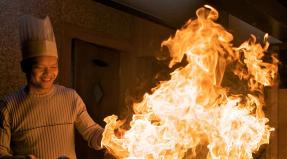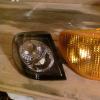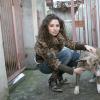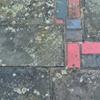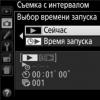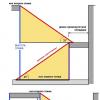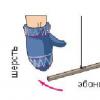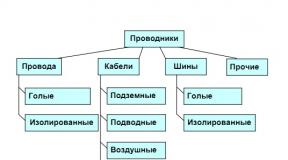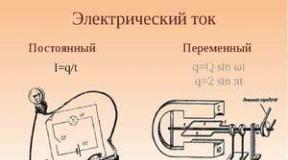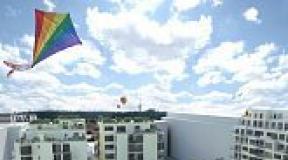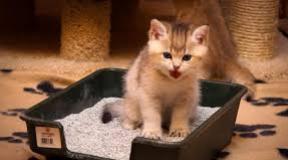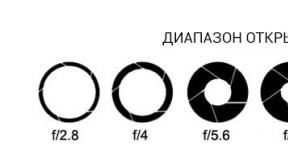Optimum aperture-to-iso ratio. How to set shutter speed and aperture correctly. Exposure basics for a beginner. Motion Control and Depth of Field
Before writing what the shutter speed and aperture are, a small digression. Each frame requires a certain amount of light (exposure). The camera has three options for dosing the luminous flux: aperture, shutter speed and sensitivity. Sensitivity is used only in cases where the situation does not allow you to change the shutter speed and aperture. In addition to controlling the light entering the matrix, shutter speed and aperture are effective art tools. First you need to understand them, and with time and experience, ease of use will come. An experienced photographer uses these tools at the subconscious level. So..
On most old lenses and a few new lenses, you set the aperture using the aperture ring on the lens, which will look something like this. The aperture opposite the orange index line indicates the selected aperture. In many modern lenses, there is no aperture ring on the lens. The aperture is set electronically using the controls on the camera.
Lenses with a wider maximum aperture than other comparable lenses in the same focal length range are called “fast” lenses, which means they allow more light to pass through than the average lens when they are wide open. Having a quick lens that allows more light means you have the ability to increase shutter speeds. If a wildlife photographer struggles with low light at a shutter speed that is too long to freeze his subject and says, “I need a faster lens,” you will know what that means.
Diaphragm.
(diaphragma - partition, Greek), in English “aperture” (aperture, English)
Aperture - a lens design element responsible for the diameter of the hole transmitting light to a photosensitive surface (film, or matrix).
For a simple understanding of the diaphragm - I will give an analogy with the window. The wider the window shutters are open, the more light passes through the window.
The same goes for a portrait or a wedding photographer working indoors with ambient light. Some cameras give you a choice. This comes in handy when you perform exposure compensation. If this helps to remember the series, the first two numbers in the series are 1 and the square root of 2. If you double each of these numbers, you will have every other number in the series.
If you're wondering where the word “stop” comes from in terms of photography, the photographer will have a set of flat metal plates for a long time. Each plate would have a round hole or “stop” drilled in it, and the hole would be a different size for each plate. The photographer would choose a separate “stop” for insertion into the camera to control the amount of light passing through the lens.
The aperture is denoted as f / 2.8 or f: 2.8, defined as the ratio of the focal length to the diameter of the lens inlet. The concepts of open, large aperture (f / 2.8) and large aperture f / 16 are often confused. The smaller the number in the diaphragm designation, the more it is open.
Changing F by one value, the amount of light entering the camera changes by 2 times. This is called the exposure level. Any changes (on the scale of the camera) of the exposure occur in increments of 1 step. For accuracy, the stage is divided into thirds, if necessary.
And remember that they are fractions, even if they are not written that way. The shutter speed determines how long the light travels through the lens to get into the film or digital sensor. Like the lens apertures, shutter speeds are measured at stops and fractions of stops.
Shutter speeds are very intuitive and easy to learn, as we do time units all the time. With a little rounding here and there, the shutter speed at full stops is associated with doubling and halving the amount of time and, therefore, doubling and halving the amount of light.
Aperture is a very powerful visual tool. The maximum open aperture gives a very small depth of field (depth of field). Small DOF visually highlights an object on a blurred background.
To obtain a large depth of field, a maximum closed aperture is used. To get a greater depth of field in the frame, use aperture value of 8 or more. However, playing with the aperture value, remember that when approaching the extreme aperture values \u200b\u200bthere are the following dangers. When open, the worst indication of sharpness, and when closed, all dust on the matrix will be visible on the frame (for digital cameras).
When you start in the upper left corner and move through each line, each shutter speed allows one stop more light than in front of it. The above shutter speed chart indicates an interesting feature of very long exposures. The transition from 1 second to 2 seconds is a sharp change in exposure, doubling the light in a total of one full stop. The transition from 30 seconds to 31 seconds has virtually no effect on the exposure, this is just a small part of the stop. To add a stop of up to 30 seconds, you need to go to 60 seconds.
A large depth of field is more suitable for landscape photography, when the viewer will be interested to consider all the details of the photo.
Exposure
Exposure - the time interval over which the shutter opens to transmit light to the photosensitive element.
The open window analogy will help again. The longer the leaves are open, the more light will pass.
If you need a 15-minute exposure to capture some star trails, it doesn't really matter if you finish using 14 or 16 minutes. Of course, your camera will not have all these shutter speeds, but the shutter speed range has been increasing over the years. If you haven’t photographed the night sky with a shutter speed of 4 minutes to 30 minutes, or longer when you are trying. If you don’t know how to do this, check out the relevant chapters. This means that things get a little more complicated in about 1 second.
Exposure is always measured in seconds and milliseconds. It is indicated as: 1/200, only the denominator is displayed in the camera: 200. If the shutter speed is a second or longer, it is indicated as 2 ″ i.e. 2 seconds
The minimum shutter speed for handheld shooting (for a sharp shot) is not constant and depends on the focal length. The inverse relation, i.e. for 300 mm it is better to use shutter speeds shorter than 1/300.
A slow shutter speed emphasizes the movement of objects. For example, wiring - with a slow shutter speed, 1/60 or longer, the camera follows the object, thus the background is blurred, and the object remains sharp. Long exposure flowing water turns into frozen shapes.
I use very short exposures to stop the moment, such as splashing a dropped drop or flying a bullet.
Cameras have different systems for indicating the difference, from color coding to small characters next to numbers to indicate full seconds. Make sure you know how your camera does this. Here's a typical shutter speed for most older camera models and a few later retro-style cameras.
Shutter speed is longer than one second, orange. On older cameras, the shutter speed was only available in increments of full stop. Just like with holes, it’s nice to remember the shutter speed in increments of full stop. This will be useful if you want to use exposure compensation.
ISO sensitivity
Sensitivity is a purely technical concept denoting the sensitivity of a matrix (or film) to light. Imagine sunbathing people on the beach. The one whose skin is more sensitive will tan faster, i.e. he needs less light for this. The other, on the contrary, needs more light to tan, because he has low sensitivity.
Reciprocity: sharing aperture and shutter speeds. This is a combination of simultaneous apertures and shutter speeds that determine how much light reaches your digital sensor or film. A wide aperture and a faster shutter speed can provide the same accurate exposure as a smaller aperture and a shorter shutter speed. It is like filling a bucket of water with garden hoses of different sizes. A large garden hose can fill a bucket faster than a tiny garden hose.
And a huge hose from a fire truck can’t practically fill a bucket with water. Using different combinations of apertures and shutter speeds to get the same exposure is called “reciprocity” because there is a mutual relationship. Assuming that the lighting conditions did not change, all of these combinations of aperture and shutter speed would provide exactly the same exposure.
Sensitivity is directly related to the amount of noise. The higher the ISO, the more noise, and the film has a grain size. Why? Purely technically, in general this is the topic of an extended article.
At ISO 100, the signal is removed from the matrix without amplification, at 200 it is amplified by 2 times and so on. At any gain, interference and distortion appear, and the greater the gain, the more side effects. They are called noises.
As the aperture becomes one step wider in each successive row, the shutter speed becomes one step faster, so the combination in each row provides the same amount of light for the sensor or film. With so many combinations to choose, all providing the same impact you have to choose? This is an artistic decision, because the combinations you choose will have completely different artistic “looks.”
On the other hand, if you wanted a blurry runner, you would go with a much slower shutter speed. If you are going to pan the runner and blur the background, this will require another shutter speed. Like apertures and shutter speeds, they are in full incremental increments, as well as stop ratios.
The noise intensity is different on different cameras. At a minimum ISO, noise is not visible and is also less apparent when processing photos. Starting with ISO 600, almost all cameras are quite noisy and you need to use noise reduction programs to get a good frame.
Total.
Together, the shutter speed and aperture value - form an exposure pair (the optimal combination of shutter speed and aperture that is correct for the given lighting conditions). The exposure coupler determines the exposure of the frame. Previously, exposure meters were used to determine which exposure was determined based on the amount of light and aperture. Previously, the exposure meter was used as a separate device, today it is built into almost every camera.
Exposure compensation will be discussed in the next article in this series. This also applies to apertures. All of them are equivalent. Cinographers have been engaged in grain for many years. A higher film speed should have a larger grain in order to respond more quickly to light. High speed film is really faster.
The same number of photons of light still hits the digital sensor. The sensor does not get faster. It is like increasing the volume on an old type of radio station to amplify the signal from a remote radio station. The station gets louder, but you get a lot of noise or static. the camera activates the gain, you get the correct exposure with less light, but you also get a lot of visual noise or static.
Each SLR camera has shutter priority and aperture priority modes. In the aperture priority mode, the aperture is selected, and the camera, analyzing the level of light, selects the shutter speed. All the way around in shutter priority mode. Almost always, I use aperture priority, it makes it possible to work with depth of field. If there is a need to shoot motion, I use shutter priority mode.
High-speed film grain looks weird and bizarre. In fact, you can buy software to add a film grain look to your digital photos. The good news is that camera manufacturers are working overtime to find ways to reduce noise. The digital noise situation continues to improve all the time.
Aperture and shutter speed together determine how much light enters the film or digital sensor. Theory of impact on the water bucket. A simple way to think about all this is to recall my “theory of the effects on water”. You have a bucket that you want to fill with water. The size of the hose you use is similar to the diaphragm of your lens. The time required to fill the bucket is the shutter speed.
I hope this information will be useful to you. To be continued!
P.S. Comments are welcome.
ISO (photosensitivity) is a parameter of your camera that determines the level of sensitivity of the camera to light. ISO is characterized by numerical values: the smaller the number, the lower the sensitivity to light, the higher the value, the greater the sensitivity to light. Depending on your camera, the lowest value is 50, 100, in rare cases 200.
If you use a really large hose, the bucket will fill faster. If you use a really small hose, it will take a long time to fill the bucket. What if it takes too long to fill a bucket? Switch to the big hose.
What if you use the largest hose you have and it still fills the bucket for a long time? A small bucket is filled in less time than a large bucket. Whenever you make changes to one, you must make changes to others in order to balance everything. In this tip, we will look at how it all comes together to create the perfect image.
Photographers need to know and understand the appropriate ISO settings. For example, if you want a more saturated image with minimal noise and a lot of detail, you should set the ISO to 100. Raising the ISO value, the image saturation and the number of parts will decrease, and the noise will increase. An increase in ISO allows you to reduce the amount of light required for the camera to take pictures, which will allow you to take pictures in the dark or in poorly lit rooms. For example, for a picture at sunset, so that the dark earth against the background of the bright sky does not go into deep shadows, you should raise the ISO to about 400. That's what happens.
What makes theses trinity?
You can achieve this effect by opening the aperture. There is one thing that all three have in common, and that is light. When you adjust any of them, you change the level of illumination and make the image more or less bright. Let's quickly look at how each of them affects exposure.
When you adjust the shutter speed, you change the length of time that the shutter remains open so that the light turns on in the camera. But if you increase the shutter speed, the shutter opens for a shorter period of time and less light enters the sensor as a whole. Aperture is a hole on the lens through which light passes before it hits the sensor. If you open the iris, more light enters the camera and the image becomes brighter. This is the number that determines the sensitivity of the image sensor to light. If it is more sensitive, you will get a bright image. If it is less sensitive, you will get a darker image.
- Shutter speed.
- If the shutter is open longer, more light enters the camera and enters the sensor.
- This will result in a darker image.
ISO 400, F / 9, 1 / 320s
By the way, the issue of shooting sunsets and, as such, the lack of dynamic range are solved in different ways, such as bracketing, HDR and gradient filters. On this topic, I advise you to read the following my articles:
Diaphragm
Physically, the diaphragm - this hole is located in the camera lens, in simple terms. Look carefully at the camera lens, you will see round or annular metal petals that open and close when the f value changes. Opening and closing the diaphragm allows you to adjust the amount of light that will fall on the matrix of your camera
When you recognize your path, you will begin to see it more clearly. One adjustment always requires adjustment of at least one of the others. Each photograph you take requires some combination of these three elements. That is why you should always think of triples.
Are there other ways to get a similar result? You just need to know how changing one value affects others. What if you chose a slower shutter speed? What happens if you change this value and nothing else? Since the shutter will open longer, more light will enter the camera. If you leave the rest unchanged, you will get a bright image. So what can you do to get the same balanced image? What can you do to get it right again?
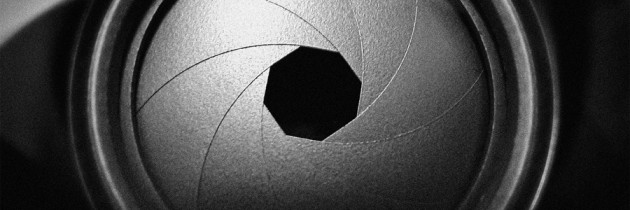
The aperture value is determined by the inverse numerical value with the letter f in front. Here are a number of values: f / 1.4, f / 1.8, f / 2.0, f / 2.8, f / 3.6, f / 4, f / 5.6, f / 8, f / 11, f / 16 and f / 22. The extreme values \u200b\u200bare determined by the characteristics of the lens, fast lenses allow you to open the aperture to f / 1.2.
Please note that the larger the numerical value, the stronger the aperture closes and, accordingly, the amount of transmitted light decreases. Conversely, the smaller the aperture value, the stronger it opens and the more light will fall on the camera’s matrix. In addition, it should be remembered that the wider the aperture is open, the more the background will blur (this is called a shallow depth of field). By closing the aperture, you increase the depth of field and, accordingly, the background will blur less. At first it’s hard to remember, but it will help you to make the very triangle of exposure in which everything is beautifully illustrated.
Here, a photograph taken on an open aperture, so that the background is blurred and the subject (girl) is separated from the background. This gives the photo depth. These photos look much more professional and better than just a photo of a girl with a clear bridge in the background.
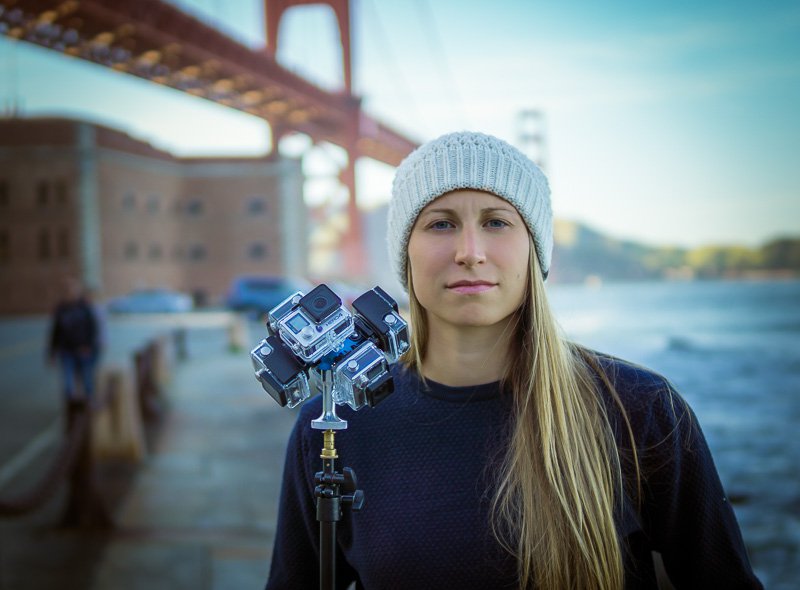
ISO 100, F / 1.4, 1 / 250s
Excerpt
Exposure is the speed with which the shutter of the camera opens and closes, determining the length of time that the light affects the camera’s matrix. While aperture is the amount of light transmitted to the matrix, shutter speed is the duration of this transmission.
Shutter speed is measured in fractions of a second, for example, 1/100 s. We remember from school that the larger the number in the denominator of a fraction, the smaller the value of the fraction, i.e., for example, 1/100\u003e 1/500. Do not mistake!
The effect of exposure on the photo is simple: the longer the exposure, the more light will fall on the matrix, the more quickly moving objects will blur. And the lower the shutter speed, the more clearly moving objects will be, but the less light will fall on the camera’s matrix, making the frame darker.
Thus, you can experiment and make artistic shots using shutter speed.
Example 1: When shooting grass swaying in the wind, you can increase the shutter speed to obtain dynamics and windiness in the frame, which in the end will get clear static objects and blurry grass.
Example 2: By shooting clouds at shutter speed, you will get dynamic blurry clouds that will build you a completely different frame. In the photo below, I photographed the coast of Phuket in the evening, notice how the clouds and leaves are washed away by the wind. You can also see how the lights from the lanterns begin to turn into stars.
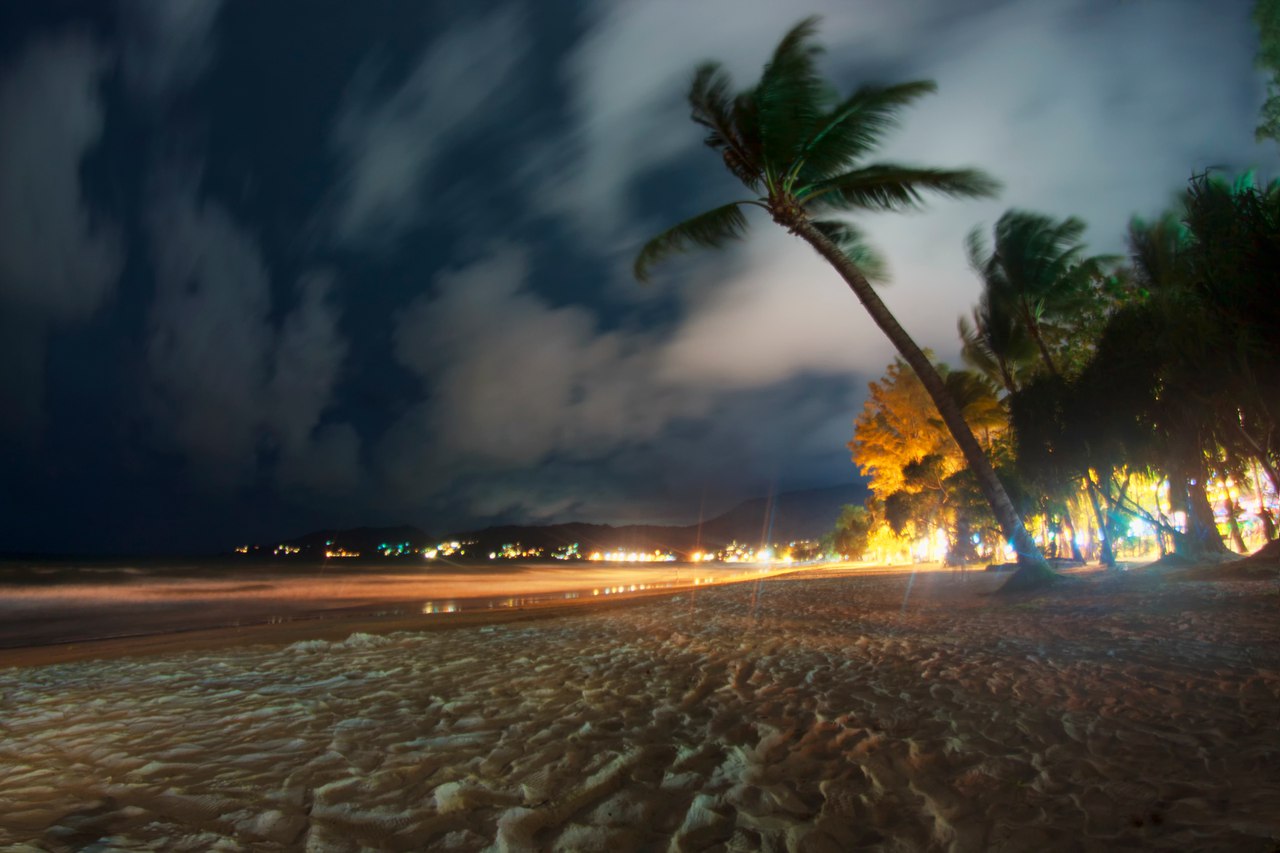
Example 3: Use the shutter speed for shooting in the dark, you will get rid of noise and get various effects of the image of light lights, depending on the length of the shutter speed. According to the night photos, I advise you to read mine.
Here is an example of a photo from examples No. 3 and No. 4, photographed by me last winter.
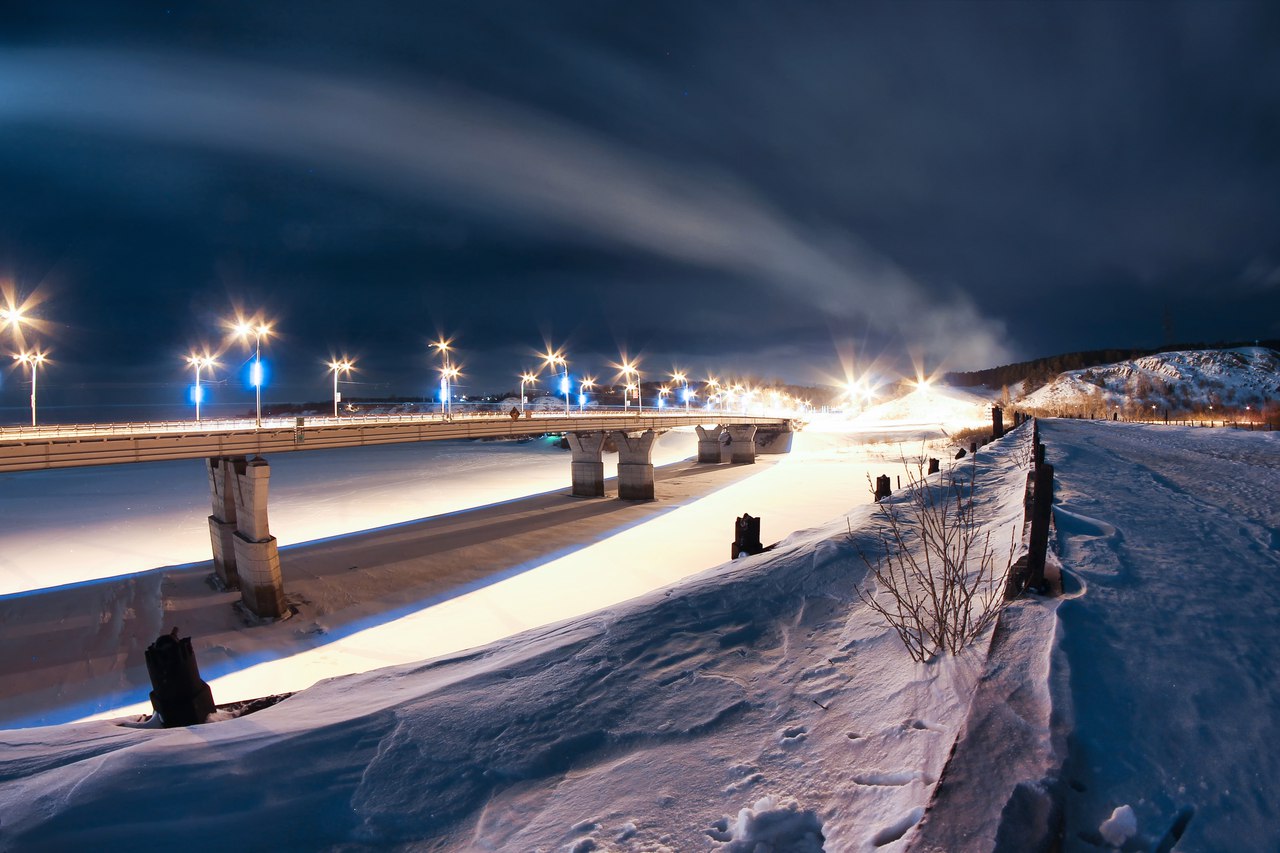
In general, there are many options for using exposure to get artistic effects.
Conclusion:
The combination of ISO, aperture, and shutter speed results in an equivalent exposure for each particular shot. If any one of these parameters is adjusted, this leads to a change in the final exposure. In order for the frame to be correctly exposed, changing one parameter we will have to change another. I already mentioned in my articles that you should not forget about the correct exposure of the frame when photographing in manual mode. Pay attention to the indicator in the viewfinder (see the picture below), which shows how the frame is exposed at the moment, with the current settings. If the slider is to the left of the zero value, then the frame is dark (underexposed), and if to the right of zero, then the frame is overexposed. Display the slider to zero by changing the settings.

Learn all these dependencies, the triangle will help you with this!
Good luck to everyone, friends and good staff!
Any questions can be asked in the comments under this article, in the group
